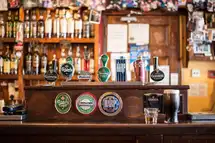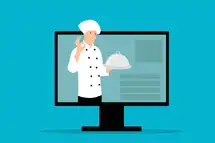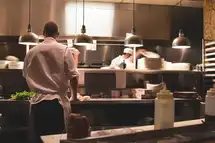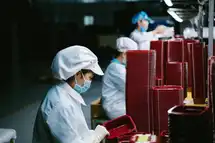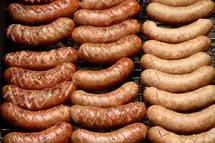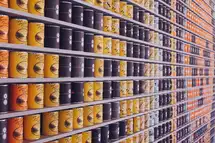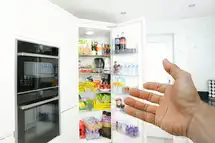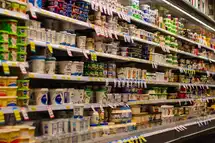What are HACCP critical control points?
HACCP critical control points (CCPs) are those parts of the process where a hazard could occur. A CCP is a point, step or procedure in a food manufacturing process at which control can be applied and, as a result, a food safety hazard can be prevented, eliminated or reduced to acceptable levels.
The Dangers of Ignoring Your HACCP Critical Control Points
What are Food Safety Hazards?
Food safety hazards are when a food product gets contaminated at any stage of food processing, making the item unsafe for consumption. There are many potential food safety hazards that can end up spoiling the food, and these hazards can be biological chemical or physical in nature. Some of the most common food safety hazards include-
- Biological contaminants such as bacteria, viruses, and parasites.
- Chemical contaminants such as pesticides, herbicides, and cleaning chemicals.
- Physical contaminants such as glass shards, metal shavings, and hair.
If not properly controlled or mitigated, these food safety hazards can cause serious foodborne illnesses or even death in people who consume contaminated foods. That's why it's important for businesses involved in the production, food processing, packaging, and distribution of food to have strict food safety protocols in place to protect consumers.
What are Critical Control Points?
In the context of food quality management, a Critical Control Point (CCP) is a step in the food production process at which control can be applied to avoid an accident or food safety hazard. It is also that critical point, where in case of a misstep or food safety violation, your kitchen staff still has a chance to take corrective actions and set things right.
There are different types of CCPs followed in the food industry. A few common examples include cooking temperature during food preparation, refrigeration and freezing temperature during storage, and expiration dates. In order to properly identify CCPs, producers must first conduct a hazard analysis to determine which steps in the process could potentially lead to safety hazards and harm consumers. Once the CCPs have been identified, food producers must establish critical limits for each one (e.g. maximum and minimum temperatures), and put in place monitoring procedures to check these limits. If a critical limit is exceeded, corrective action must be taken immediately to prevent the product from becoming unsafe for consumption.
The CDC estimates that 48 million Americans get sick from food-borne illnesses each year.
The problem is that many foodservice operators don't know what their CCPs are, and even if they do, they're not in control of them.
What's a Food Safety Plan?
A food safety plan is a comprehensive set of procedures that helps food businesses ensure the safe handling and preparation of food. It covers all aspects of food safety, from purchasing and storing food, to preparing and serving it. A good food safety plan should be tailored to the needs of a particular restaurant business, taking into account the type of food served and the size and layout of the place.
Food safety plans should ideally be based on the seven principles of Hazard Analysis Critical Control Points or an HACCP plan. A well thought out HACCP plan necessitates a detailed hazard analysis of the food business, understands the critical control points, sets critical limits for each of these, establishes precise monitoring procedures and ensures record keeping of any food safety hazards and corrective actions taken.
The HACCP Plan Explained
A HACCP Plan is a food safety system that helps ensure the safe production and handling of food products. The system is based on seven principles that address potential hazards at every stage of the food production chain, from farm to table. The seven principles of HACCP are-
1) Identify and assess potential food safety hazards, such as the food temperature Danger Zone
2) Implement effective control measures to prevent and eliminate identified safety hazards
3) Establish monitoring procedures for the control measures and maintain records
4) Verify that the system is working as intended
5) Take corrective actions when problems occur
6) Evaluate the HACCP system regularly
7) Carry out detailed record keeping of each food safety hazard and the corrective actions taken
Dangers of Overlooking Critical Control Points
Every year, about 3,000 people in the United States die due to foodborne illnesses, while around 48 million fall ill after being infected. Thus, it is extremely important that a food business has effective controls in place to ensure the safety of each product it serves its customers. Without critical control points, the likelihood of food safety hazards, contamination and foodborne illnesses increases dramatically. There are many examples of what could happen if a CCP is not managed well. Here are some of them-
1) Food poisoning- This is by far the most serious consequence of poor control point management. When bacteria or other contaminants enter the food supply, people can become very ill and in some cases, even die.
2) Product recalls- If its food offerings are found to be unsafe, a food business may have to face the embarrassment of recalling its dishes and face criticism. This can become a costly affair and also damage the reputation of the company.
3) Legal action- If someone falls ill after eating contaminated food, they may take legal action against the food business responsible for it. This can result in heavy fines and negative publicity.
It is clear that overlooking CCPs can have dire consequences for both, businesses and consumers alike. That's why it's so important for everyone involved in the food industry to understand what critical control points are and how to effectively manage them.
Foodborne illnesses are on the rise.
With the increased risk of foodborne illness, it's more important than ever to make sure your CCPs are in control.
Benefits of a Digitalized Food Safety Management System
There are many benefits of having a digitized food safety management system. Perhaps the most obvious benefit is that it can help automate and streamline processes related to food safety. This means that your restaurant staff spends less time on paperwork and more time on other important tasks, such as food preparation and customer service. With a digitized food safety management system, a food business owner can rest assured that all food safety procedures will be followed diligently and all safety hazards will be addressed at the earliest. An automated system will send out real-time alerts in case of violations, thus improving efficiency and coordination.
Another benefit of a digitized food safety management system is that it provides a central repository for all record keeping and information related to food safety. This can be extremely helpful in the event of an incident or complaint, as all relevant information will be readily available in one place.
Top 3 Food Safety Management Systems for the Foodservice Industry
Here are the top three food safety management systems you can trust to handle your food business-
1. Zip HACCP
Zip HACCP is a food safety management system offered by Hubworks. It is designed for food businesses, enabling them to develop a fool-proof HACCP plan and avoid food safety hazards. With Zip HACCP, you can prepare an easy-to-understand HACCP plan using flow diagrams for each step of the process. Zip HACCP will take your staff through each of the food safety processes- conducting hazard analysis, identifying the critical control points, establishing critical limits, implementing monitoring procedures, carrying out verification processes, and assisting in record keeping. With Zip HACCP, you can rest assured that your food business will stay compliant with the rules of local food authorities.
2. FoodLogicQ
FoodLogicQ is a food safety management software that provides food businesses with interactive monitoring tools and dashboards that are easy to use and help them stay compliant with local laws. The system gives the staff full control over food safety procedures, develops a food safety management plan based on HACCP principles, assists in implementing control measures and developing monitoring procedures, and charting out corrective actions. With its visual dashboards, you can keep track of all the stages of food preparation, take CCP decisions when needed, and ensure best practices are followed.
3. Safefood 360
Safefood 360 is a complete food safety management system with which restaurants can carry out quality control exercises, ensure food safety compliance and take corrective actions when needed. With this safety program, your staff will have access to over 35 preset modules. These can be applied to various safety hazard scenarios that may develop at any of the food processing stages. The different modules of the safety program will prepare your staff for all potential safety hazards and enable them to take necessary action. With this software, you can also carry out detailed record keeping, food safety audits, and real-time reporting.
You want to maintain a robust food safety program, but you're not sure which steps are critical.
HACCP helps you identify your CCPs and keep them in control.


